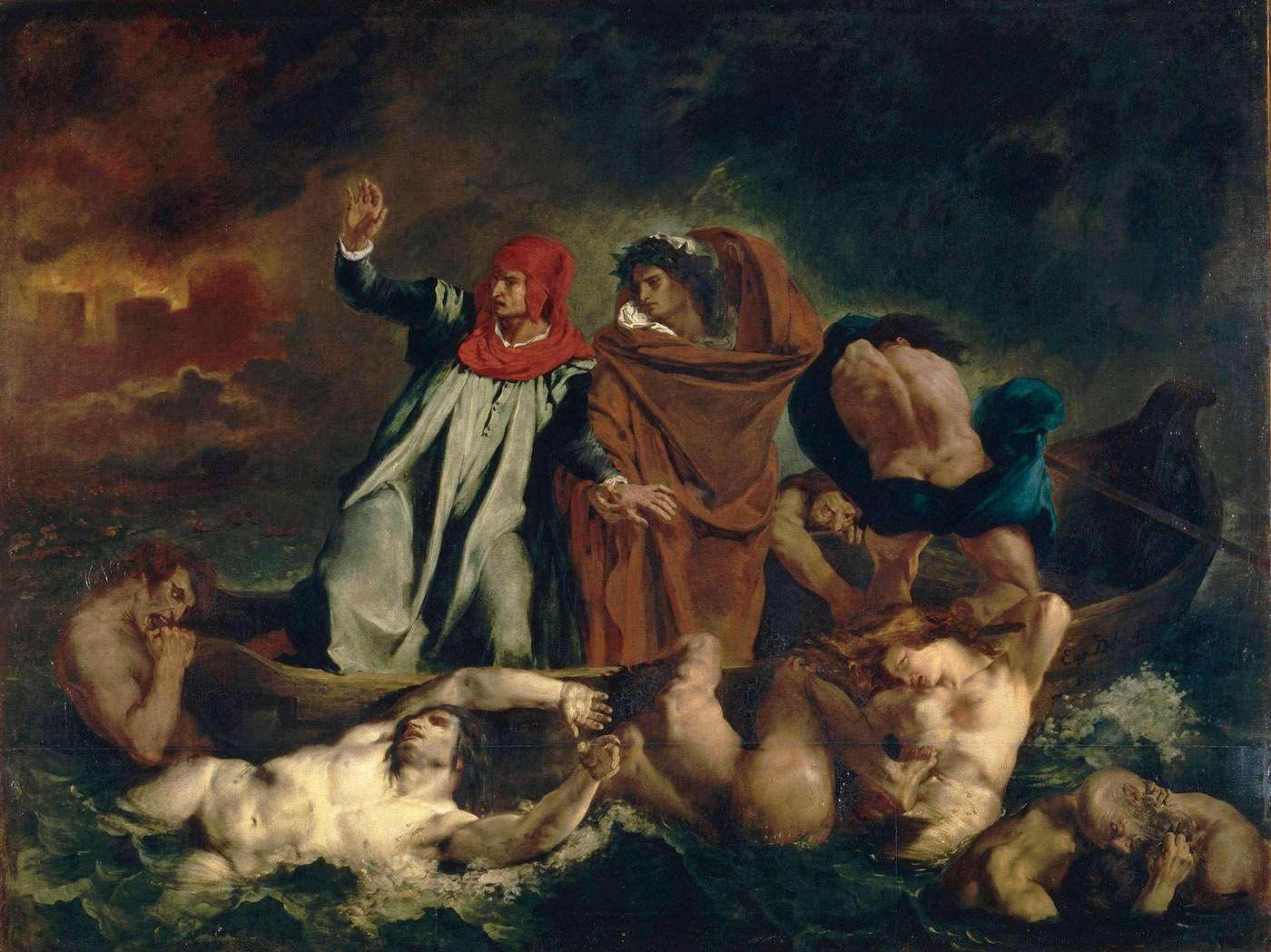Эжен Делакруа - Барка Данте 1822
 |
 |
 |
 |
 |
 |
 |

Барка Данте 1822
241x189см холст/масло
Musée du Louvre, Paris, France
<< Previous G a l l e r y Next >>
From Wikipedia, the free encyclopedia:
The Barque of Dante (French: La Barque de Dante), sometimes known as Dante and Virgil in Hell (Dante et Virgile aux enfers), is the first major painting by the French artist Eugène Delacroix, and one of the works signalling a shift in the character of narrative painting from Neo-Classicism towards the Romantic movement. It was completed for the opening of the Salon of 1822 and currently hangs in the Musée du Louvre, Paris.
The painting is loosely based on fictional events taken from canto eight of Dante’s Inferno. A leaden, smoky mist and the blazing City of the Dead form the backdrop against which the poet Dante endures a fearful crossing of the River Styx. He is steadied by the learned poet of antiquity Virgil as they plough through waters heaving with tormented souls.
The arrangement of figures is for the most part compliant with the tenets of the cool, reflective Neo-Classicism that had dominated French painting for nearly four decades. There is a group of central upright figures, and a rational arrangement of subsidiary figures, all in horizontal planes, and observing studied poses.
In the summer of 1822, the French State purchased the painting for 2000 Francs, and moved it to the Musée du Luxembourg. Delacroix was delighted on hearing the news, although he feared the piece would be less admired for being viewed at close quarters. Some two year later he revisited the painting, reporting that it gave him much pleasure, but describing it as being insufficiently vigorous; a deficiency he had identified in the painting he was working on at the time, The Massacre at Chios. The painting was moved in 1874—eleven years after the death of the artist—to its present location, the Musée du Louvre.